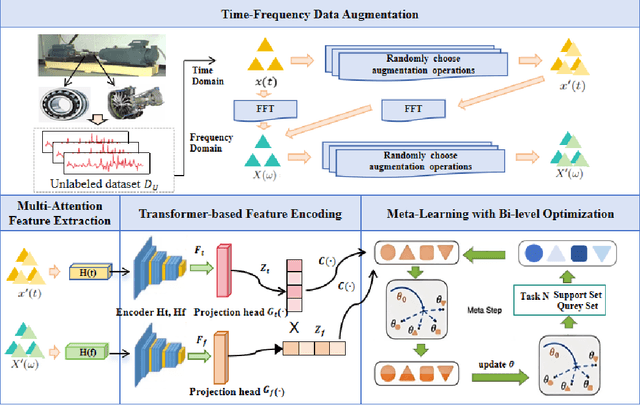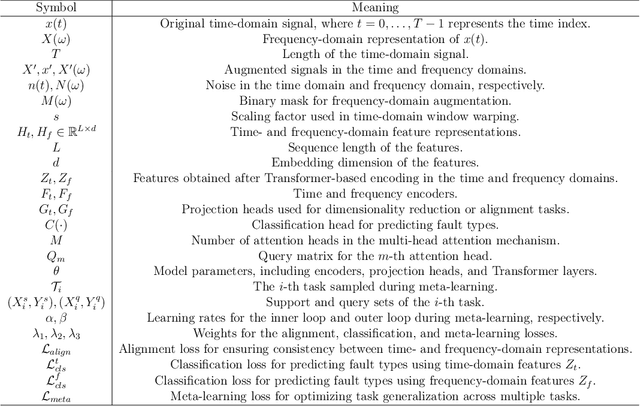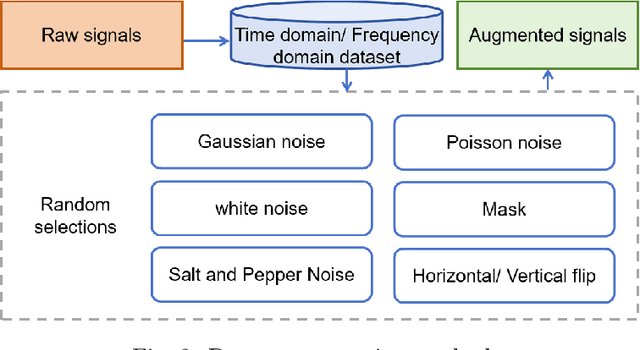Yuxuan Yang
Single-View Shape Completion for Robotic Grasping in Clutter
Dec 18, 2025Abstract:In vision-based robot manipulation, a single camera view can only capture one side of objects of interest, with additional occlusions in cluttered scenes further restricting visibility. As a result, the observed geometry is incomplete, and grasp estimation algorithms perform suboptimally. To address this limitation, we leverage diffusion models to perform category-level 3D shape completion from partial depth observations obtained from a single view, reconstructing complete object geometries to provide richer context for grasp planning. Our method focuses on common household items with diverse geometries, generating full 3D shapes that serve as input to downstream grasp inference networks. Unlike prior work, which primarily considers isolated objects or minimal clutter, we evaluate shape completion and grasping in realistic clutter scenarios with household objects. In preliminary evaluations on a cluttered scene, our approach consistently results in better grasp success rates than a naive baseline without shape completion by 23% and over a recent state of the art shape completion approach by 19%. Our code is available at https://amm.aass.oru.se/shape-completion-grasping/.
Statistically Assuring Safety of Control Systems using Ensembles of Safety Filters and Conformal Prediction
Nov 11, 2025Abstract:Safety assurance is a fundamental requirement for deploying learning-enabled autonomous systems. Hamilton-Jacobi (HJ) reachability analysis is a fundamental method for formally verifying safety and generating safe controllers. However, computing the HJ value function that characterizes the backward reachable set (BRS) of a set of user-defined failure states is computationally expensive, especially for high-dimensional systems, motivating the use of reinforcement learning approaches to approximate the value function. Unfortunately, a learned value function and its corresponding safe policy are not guaranteed to be correct. The learned value function evaluated at a given state may not be equal to the actual safety return achieved by following the learned safe policy. To address this challenge, we introduce a conformal prediction-based (CP) framework that bounds such uncertainty. We leverage CP to provide probabilistic safety guarantees when using learned HJ value functions and policies to prevent control systems from reaching failure states. Specifically, we use CP to calibrate the switching between the unsafe nominal controller and the learned HJ-based safe policy and to derive safety guarantees under this switched policy. We also investigate using an ensemble of independently trained HJ value functions as a safety filter and compare this ensemble approach to using individual value functions alone.
Can Context Bridge the Reality Gap? Sim-to-Real Transfer of Context-Aware Policies
Nov 06, 2025Abstract:Sim-to-real transfer remains a major challenge in reinforcement learning (RL) for robotics, as policies trained in simulation often fail to generalize to the real world due to discrepancies in environment dynamics. Domain Randomization (DR) mitigates this issue by exposing the policy to a wide range of randomized dynamics during training, yet leading to a reduction in performance. While standard approaches typically train policies agnostic to these variations, we investigate whether sim-to-real transfer can be improved by conditioning the policy on an estimate of the dynamics parameters -- referred to as context. To this end, we integrate a context estimation module into a DR-based RL framework and systematically compare SOTA supervision strategies. We evaluate the resulting context-aware policies in both a canonical control benchmark and a real-world pushing task using a Franka Emika Panda robot. Results show that context-aware policies outperform the context-agnostic baseline across all settings, although the best supervision strategy depends on the task.
Designing Latent Safety Filters using Pre-Trained Vision Models
Sep 18, 2025Abstract:Ensuring safety of vision-based control systems remains a major challenge hindering their deployment in critical settings. Safety filters have gained increased interest as effective tools for ensuring the safety of classical control systems, but their applications in vision-based control settings have so far been limited. Pre-trained vision models (PVRs) have been shown to be effective perception backbones for control in various robotics domains. In this paper, we are interested in examining their effectiveness when used for designing vision-based safety filters. We use them as backbones for classifiers defining failure sets, for Hamilton-Jacobi (HJ) reachability-based safety filters, and for latent world models. We discuss the trade-offs between training from scratch, fine-tuning, and freezing the PVRs when training the models they are backbones for. We also evaluate whether one of the PVRs is superior across all tasks, evaluate whether learned world models or Q-functions are better for switching decisions to safe policies, and discuss practical considerations for deploying these PVRs on resource-constrained devices.
Unsupervised Multi-Attention Meta Transformer for Rotating Machinery Fault Diagnosis
Sep 11, 2025



Abstract:The intelligent fault diagnosis of rotating mechanical equipment usually requires a large amount of labeled sample data. However, in practical industrial applications, acquiring enough data is both challenging and expensive in terms of time and cost. Moreover, different types of rotating mechanical equipment with different unique mechanical properties, require separate training of diagnostic models for each case. To address the challenges of limited fault samples and the lack of generalizability in prediction models for practical engineering applications, we propose a Multi-Attention Meta Transformer method for few-shot unsupervised rotating machinery fault diagnosis (MMT-FD). This framework extracts potential fault representations from unlabeled data and demonstrates strong generalization capabilities, making it suitable for diagnosing faults across various types of mechanical equipment. The MMT-FD framework integrates a time-frequency domain encoder and a meta-learning generalization model. The time-frequency domain encoder predicts status representations generated through random augmentations in the time-frequency domain. These enhanced data are then fed into a meta-learning network for classification and generalization training, followed by fine-tuning using a limited amount of labeled data. The model is iteratively optimized using a small number of contrastive learning iterations, resulting in high efficiency. To validate the framework, we conducted experiments on a bearing fault dataset and rotor test bench data. The results demonstrate that the MMT-FD model achieves 99\% fault diagnosis accuracy with only 1\% of labeled sample data, exhibiting robust generalization capabilities.
MedReasoner: Reinforcement Learning Drives Reasoning Grounding from Clinical Thought to Pixel-Level Precision
Aug 11, 2025Abstract:Accurately grounding regions of interest (ROIs) is critical for diagnosis and treatment planning in medical imaging. While multimodal large language models (MLLMs) combine visual perception with natural language, current medical-grounding pipelines still rely on supervised fine-tuning with explicit spatial hints, making them ill-equipped to handle the implicit queries common in clinical practice. This work makes three core contributions. We first define Unified Medical Reasoning Grounding (UMRG), a novel vision-language task that demands clinical reasoning and pixel-level grounding. Second, we release U-MRG-14K, a dataset of 14K samples featuring pixel-level masks alongside implicit clinical queries and reasoning traces, spanning 10 modalities, 15 super-categories, and 108 specific categories. Finally, we introduce MedReasoner, a modular framework that distinctly separates reasoning from segmentation: an MLLM reasoner is optimized with reinforcement learning, while a frozen segmentation expert converts spatial prompts into masks, with alignment achieved through format and accuracy rewards. MedReasoner achieves state-of-the-art performance on U-MRG-14K and demonstrates strong generalization to unseen clinical queries, underscoring the significant promise of reinforcement learning for interpretable medical grounding.
The First WARA Robotics Mobile Manipulation Challenge -- Lessons Learned
May 11, 2025Abstract:The first WARA Robotics Mobile Manipulation Challenge, held in December 2024 at ABB Corporate Research in V\"aster{\aa}s, Sweden, addressed the automation of task-intensive and repetitive manual labor in laboratory environments - specifically the transport and cleaning of glassware. Designed in collaboration with AstraZeneca, the challenge invited academic teams to develop autonomous robotic systems capable of navigating human-populated lab spaces and performing complex manipulation tasks, such as loading items into industrial dishwashers. This paper presents an overview of the challenge setup, its industrial motivation, and the four distinct approaches proposed by the participating teams. We summarize lessons learned from this edition and propose improvements in design to enable a more effective second iteration to take place in 2025. The initiative bridges an important gap in effective academia-industry collaboration within the domain of autonomous mobile manipulation systems by promoting the development and deployment of applied robotic solutions in real-world laboratory contexts.
Not All Data are Good Labels: On the Self-supervised Labeling for Time Series Forecasting
Feb 21, 2025Abstract:Time Series Forecasting (TSF) is a crucial task in various domains, yet existing TSF models rely heavily on high-quality data and insufficiently exploit all available data. This paper explores a novel self-supervised approach to re-label time series datasets by inherently constructing candidate datasets. During the optimization of a simple reconstruction network, intermediates are used as pseudo labels in a self-supervised paradigm, improving generalization for any predictor. We introduce the Self-Correction with Adaptive Mask (SCAM), which discards overfitted components and selectively replaces them with pseudo labels generated from reconstructions. Additionally, we incorporate Spectral Norm Regularization (SNR) to further suppress overfitting from a loss landscape perspective. Our experiments on eleven real-world datasets demonstrate that SCAM consistently improves the performance of various backbone models. This work offers a new perspective on constructing datasets and enhancing the generalization of TSF models through self-supervised learning.
Spatio-Temporal Fuzzy-oriented Multi-Modal Meta-Learning for Fine-grained Emotion Recognition
Dec 18, 2024Abstract:Fine-grained emotion recognition (FER) plays a vital role in various fields, such as disease diagnosis, personalized recommendations, and multimedia mining. However, existing FER methods face three key challenges in real-world applications: (i) they rely on large amounts of continuously annotated data to ensure accuracy since emotions are complex and ambiguous in reality, which is costly and time-consuming; (ii) they cannot capture the temporal heterogeneity caused by changing emotion patterns, because they usually assume that the temporal correlation within sampling periods is the same; (iii) they do not consider the spatial heterogeneity of different FER scenarios, that is, the distribution of emotion information in different data may have bias or interference. To address these challenges, we propose a Spatio-Temporal Fuzzy-oriented Multi-modal Meta-learning framework (ST-F2M). Specifically, ST-F2M first divides the multi-modal videos into multiple views, and each view corresponds to one modality of one emotion. Multiple randomly selected views for the same emotion form a meta-training task. Next, ST-F2M uses an integrated module with spatial and temporal convolutions to encode the data of each task, reflecting the spatial and temporal heterogeneity. Then it adds fuzzy semantic information to each task based on generalized fuzzy rules, which helps handle the complexity and ambiguity of emotions. Finally, ST-F2M learns emotion-related general meta-knowledge through meta-recurrent neural networks to achieve fast and robust fine-grained emotion recognition. Extensive experiments show that ST-F2M outperforms various state-of-the-art methods in terms of accuracy and model efficiency. In addition, we construct ablation studies and further analysis to explore why ST-F2M performs well.
DiffDesign: Controllable Diffusion with Meta Prior for Efficient Interior Design Generation
Nov 25, 2024Abstract:Interior design is a complex and creative discipline involving aesthetics, functionality, ergonomics, and materials science. Effective solutions must meet diverse requirements, typically producing multiple deliverables such as renderings and design drawings from various perspectives. Consequently, interior design processes are often inefficient and demand significant creativity. With advances in machine learning, generative models have emerged as a promising means of improving efficiency by creating designs from text descriptions or sketches. However, few generative works focus on interior design, leading to substantial discrepancies between outputs and practical needs, such as differences in size, spatial scope, and the lack of controllable generation quality. To address these challenges, we propose DiffDesign, a controllable diffusion model with meta priors for efficient interior design generation. Specifically, we utilize the generative priors of a 2D diffusion model pre-trained on a large image dataset as our rendering backbone. We further guide the denoising process by disentangling cross-attention control over design attributes, such as appearance, pose, and size, and introduce an optimal transfer-based alignment module to enforce view consistency. Simultaneously, we construct an interior design-specific dataset, DesignHelper, consisting of over 400 solutions across more than 15 spatial types and 15 design styles. This dataset helps fine-tune DiffDesign. Extensive experiments conducted on various benchmark datasets demonstrate the effectiveness and robustness of DiffDesign.
 Add to Chrome
Add to Chrome Add to Firefox
Add to Firefox Add to Edge
Add to Edge